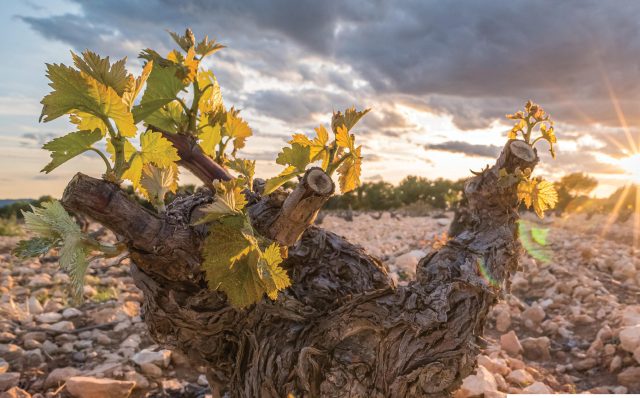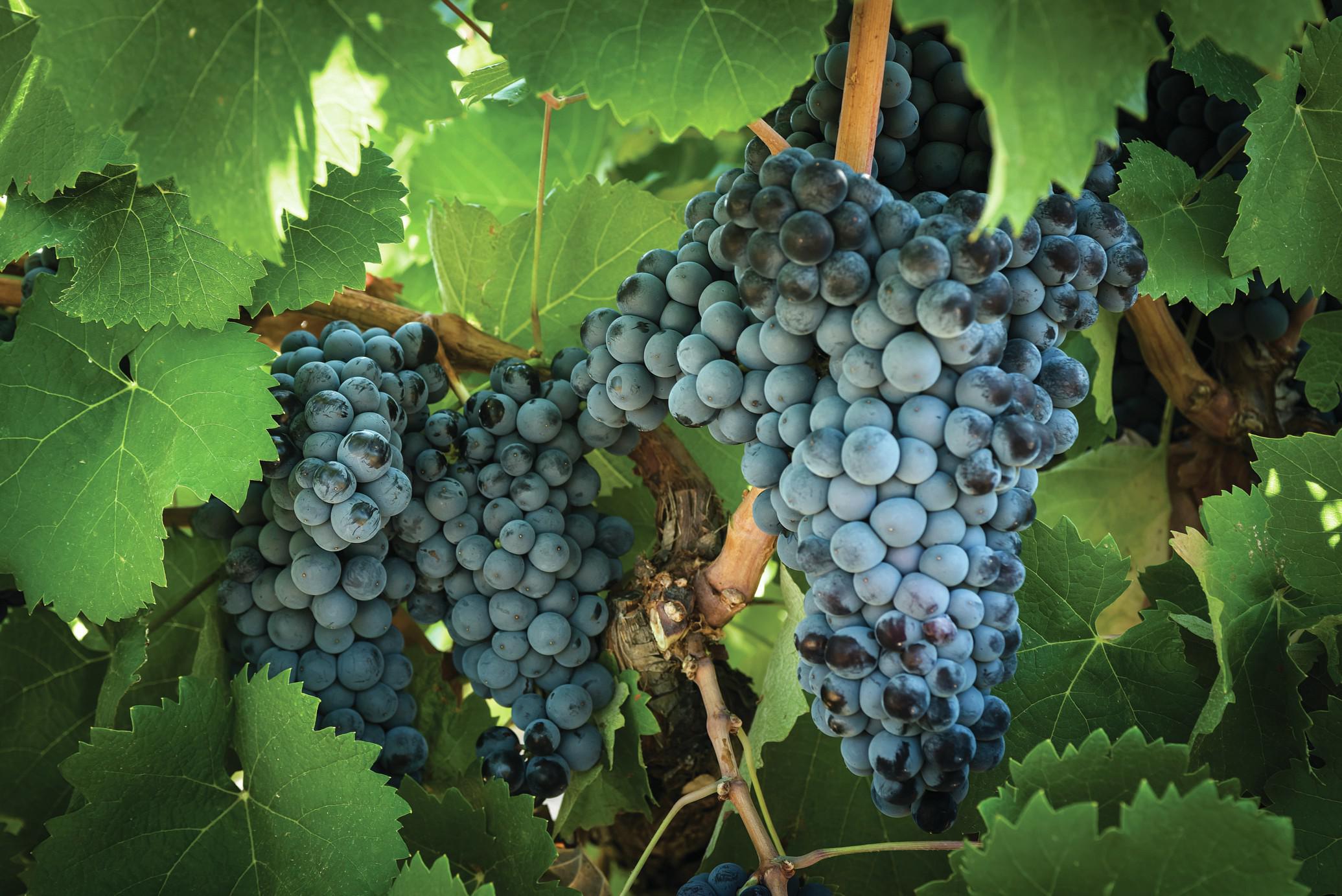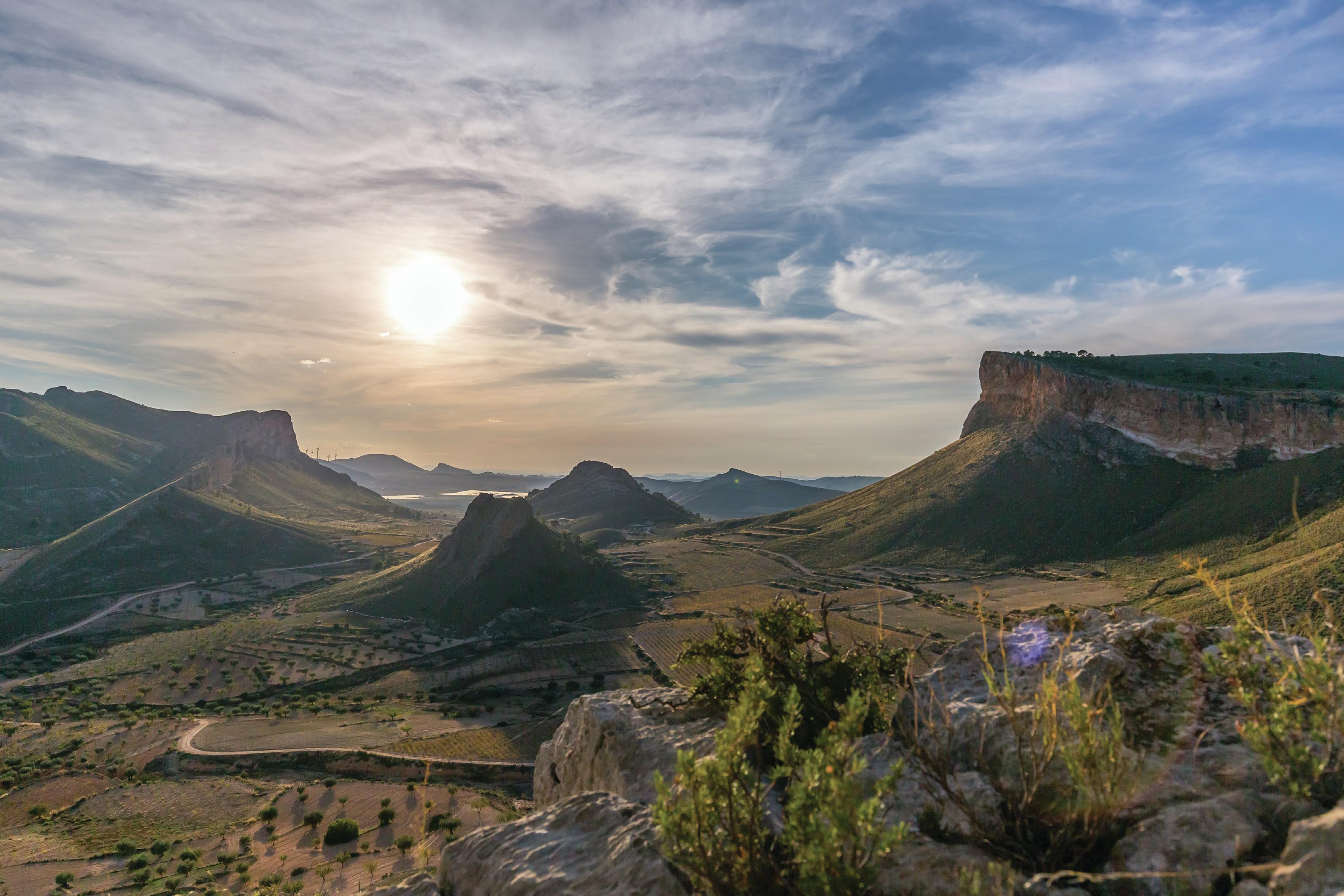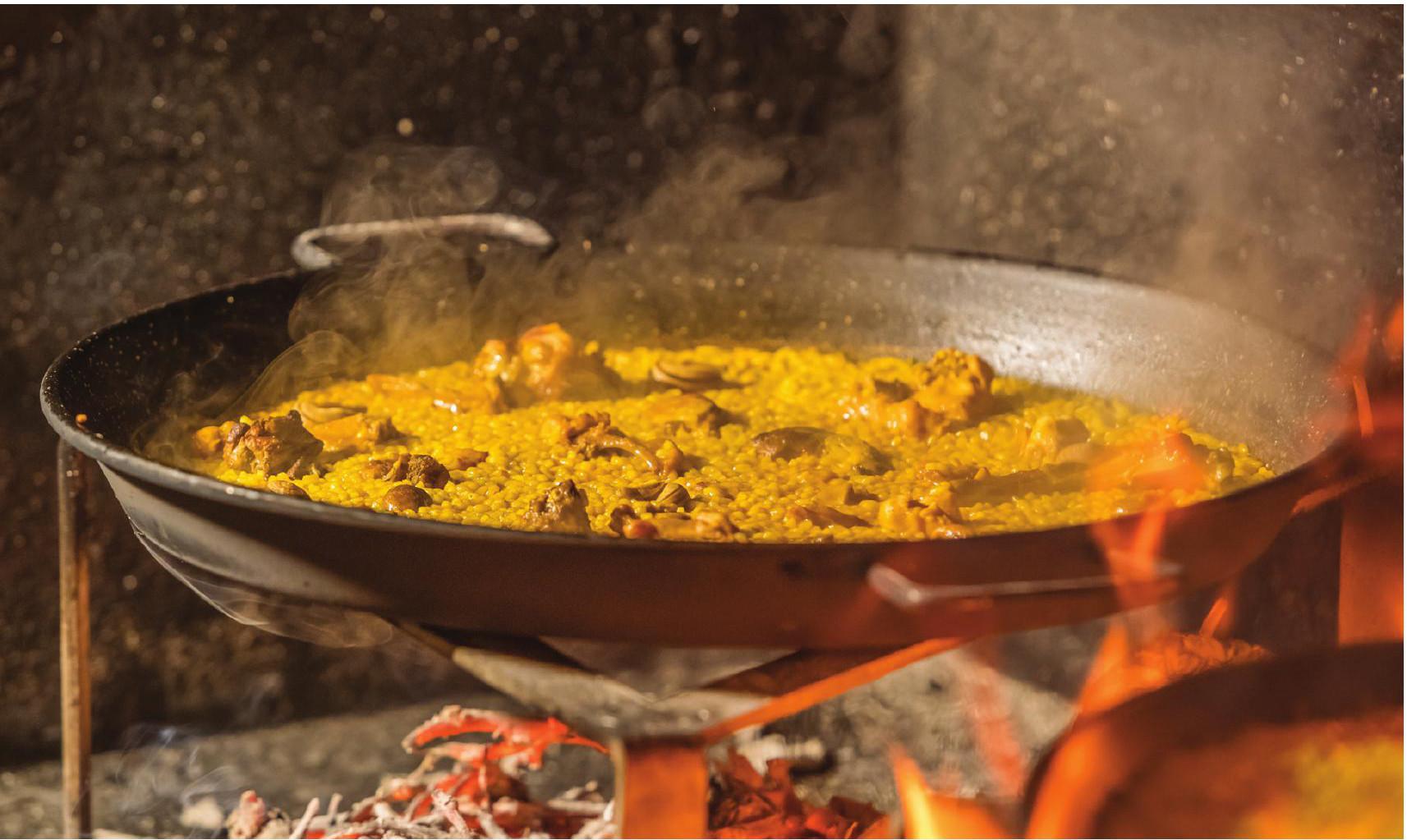This website uses cookies so that we can provide you with the best user experience possible. Cookie information is stored in your browser and performs functions such as recognising you when you return to our website and helping our team to understand which sections of the website you find most interesting and useful.
Why Jumilla wines are a rock solid investment
The Spanish region of Jumilla is famed for its arid climate and rocky soils. Now, it’s wonderfully gastronomic wines are set to take the on-trade by storm, reports Sarah Neish.

Stroll through any working vineyard and in most instances you might notice the soft give of soil or cover crops beneath your feet. If a bird soaring overhead happens to relinquish the odd twig or berry, you might hear a gently cushioned thud amid the buzzing of bees and scurrying of insects.
Not so in Jumilla, in Spain’s southeastern corner. Here, instead of soft soils underfoot, there’s the clatter of rocks knocking against each other – fist-sized, pale as bones and baking in the scorching sun.
It seems incongruous that life could survive in this lunar-like landscape, and yet it’s home to some of the country’s oldest and most magical vines.
For all the hype about ‘cool-climate’ wines, Jumilla stands out for producing the exact opposite. Ferocious sun, desert-like conditions and limestone plots that look more like pebble beaches than vineyards miraculously combine to produce wines of exceptional personality and freshness.
“A winemaker from Madrid came to visit us and said: ‘What are they growing here? Grapes or stones?’,” says Esther González de Paz, communications and marketing director for DOP Jumilla, with a twinkle in her eye.
Located inland in Murcia, around an hour ’s drive from Alicante, the historic wine-producing region of Jumilla is distinctive for its arid climate, rocky soils and scant rainfall – only 300mm annually – conditions which might seem hostile, but which have contributed to its quiet success for centuries.
The fact that these inhospitable lands are almost devoid of water means that Jumilla’s vineyards are practically disease-free, and managed to survive the ravages of phylloxera as it swept across Europe with a wave of the reaper ’s hand in the late 19th century. More than 70% of France’s vineyards were left in ruins following the blight, which saw Jumilla lithely jumping in to supply countries such as Portugal, which were crying out for wine.
During this period, the region’s vineyard area shot up from just 2,000 hectares in 1850 to 50,000ha in 1890, marking a period of razor-sharp growth that González de Paz describes as Jumilla’s “bubble of demand”.
Today, although the quality of its wines has vastly improved, the region is rapidly losing hectarage as other areas of agriculture, such as fruit trees, encroach. There are currently 20,000ha of vines planted in Jumilla, with the highest sites climbing to a dizzying altitude of 1,000m.
“All the different altitudes in Jumilla mean the region has one of the longest harvests in Spain, lasting for three months in total,” says Carolina Martínez Origone, general secretary, DOP Jumilla.
The aforementioned fruit trees are also at the core of some political unrest. Such is the scarcity of water that winegrowers have to battle it out for the precious commodity with other areas of agriculture – not least with outsiders who come from overseas and set up tented nurseries which gulp much-needed H20 from the soils.
“Each farmer in Jumilla must buy their own water shares from the local administration. Everyone is allocated a set amount of water, but this is not only to manage vineyards, but also often almond trees, olive trees and other agricultural produce,” explains González de Paz.
“Every farmer has to decide for themselves what to give their water to. This is only the case in Murcia; nowhere else in Spain. And often, the rights for the water cost more than the title for the land.”
Because of this unforgiving reality, Jumilla winegrowers have become elite at water management, carefully eking out what they have, and dry-farming a whopping 79% of vineyards. Due to the heat, the old bush vines hunch close to the ground, as though unsure whether to risk poking their heads above the parapet.

I visit the region in early October 2022, at the peak of the harvest for Monastrell (Jumilla’s flagship grape variety), when temperatures still climb to a toasty 270C.
Despite reduced yields – producers report a fall of about 20% in Monastrell volumes compared to 2021 year – the trucks we pass on the roadside are heaving with indigo-hued grapes, albeit with smaller berries than usual due to a heatwave that struck during flowering season. Drivers are queuing at every winery gate, waiting to have their bounty weighed and tipped into concrete vats for destemming.
Although there is palpable excitement for the 2022 harvest, it bears no real comparison with 2021, a mythical vintage for Jumilla; one so good, say producers, that there is unlikely to be another like it.
“2021 is the year to seek out and keep, as it was almost perfect and the wines will only get better in bottle,” says Bodegas Luzón general manager Francisco Martinez. The 2022 grapes, he says, are more irregular. “This year is the one for winemakers to show off their skills,” he says.
Bringing the grapes into check is no small challenge in the cellar, though the pressure is on.
“Monastrell is a tough variety, very sensitive,” concurs Rosana Madrid Romero, owner of Madrid Romero winery, based in Jumilla’s Carche Valley. “We have to work hard on it because if we don’t, we lose everything.”
ROBUST OPPOSITION
This is no hyperbole as Monastrell accounts for about 80% of total plantings in Jumilla, with Syrah, Tempranillo, Petit Verdot, Garnacha and Cabernet Sauvignon also permitted under DO rules.
A small quantity of white varieties is also planted, including Sauvignon Blanc, Chardonnay, Airén and Malvasia. One producer – Luzón – is currently lobbying to have Viognier added to the fold, but the proposal has been met with robust opposition, as white varieties require more irrigation, and the DO sees the sustainable future of the region as lying in its dry-farmed reds.
“During the last five years Jumilla winemakers have shifted towards really believing in Monastrell, and have started increasingly bottling it as single-varietal wines,” says González de Paz.
She explains that growers first began experimenting with Cabernet Sauvignon and Tempranillo in Jumilla about 25 years ago, but are no longer planting these particular varieties as “they need more water than we have”.
However, she points out that: “Syrah grows very well here and works much better in our terroir than Cabernet Sauvignon. Producers are using it to make single-varietal wines, red blends and even rosés.”
Due to the altitudinous nature of the region, fragrant aromas and delicate flavours of mountain herbs including thyme, rosemary and fennel are often present in Jumilla wines, which lean towards medium acidity.
To give some idea of the age of the mountains that cradle the region, fossils of ancient sea creatures have been found high up in their peaks; creatures that started off life on the sea bed and travelled skyward as tectonic plates shifted, splitting and pressing the land up into what is now mountainous terrain.

According to the DOP, Jumilla is in the midst of another seismic era. Sales of its wine rocketed during the Covid pandemic, and global awareness of Jumilla wines grew exponentially.
“It’s time for wines that are good but not expensive in the world. Maybe this is our time,” says González de Paz. According to Shayne Yap, export manager for Ego Bodegas, which exported 3m bottles to a total of 50 countries last year: “The world is starting to become more open to Jumilla.”
In fact, 98% of Ego’s business is export. “Until recently, people only used to be interested in the big Spanish regions like Rioja, but now importers are fighting to have at least one Jumilla wine in their portfolio, when just a few years ago they would have asked: ‘Why should we?’. We’ve seen sales grow steadily each year, but in 2021 they really spiked.”
Yap attributes this growth partially to import tax increases introduced by the US, which saw importers scrambling to buy Jumilla wines before the tariffs took hold, but also to consumers having more time on their hands during the pandemic to research other wine regions.
“For many people it was the first time they’d ever had to sit down and think about something like that,” she says.
What those consumers found without having to search too hard is that wines from Jumilla –both ‘entry-level’ and top-end expressions – are significantly cheaper than those from the likes of Rioja and Ribera del Duero. This is especially true in the on-trade, where diners can pick up a bottle of Jumilla’s finest wine for a stitch of the price.
A shining example of this is Juan Gil’s El Nido, which has become a favourite in restaurants across the globe, with good reason. The Monastrell/Cabernet blend, which is aged for 24 months in barrel and was awarded 99 points by wine critic Robert Parker, is widely considered to be one of Spain’s ‘prestige’ wines and is one of the most decorated from Jumilla.
Only 8,000 bottles of El Nido are produced per year (more like 7,000 bottles in 2022 due to the short Monastrell harvest) and, despite it being crafted from extremely low-yielding, 70-year-old vines, the wine commands a price of only €110 in the off-trade, and €300 in a restaurant.
Its younger sister Clio, Juan Gil’s ‘second wine’, is also ludicrously good bang for your buck. “If you see Clio in a restaurant, you buy it,” says González de Paz, resolutely. “It’s usually on the wine list for around €45-50, which is an extremely good price for the quality. Even in the most expensive restaurants in Spain it might still only be €80.”
The Juan Gil group, which owns 11 wineries across Spain, including in Galicia, Rueda, Zamora and Priorat, is adamant about holding the price of its top wines; proof of the value-to-quality ratio that Jumilla can offer.
“We want to guarantee and hold the price of our top wines rather than sell en primeur,” says Loren Gill, export manager for Juan Gil. “We want to share what we have fairly across our distributors. El Nido must be the best of the best. If that means producing far less of it to preserve the quality, then so be it.”
Because Juan Gil’s Monastrell comes from old bush vines, which yield “around one bunch per vine per year, amounting to less than 500g grapes per vine, all the grapes from these old vines go only into El Nido and Clio”, explains Gil.
One curiosity is that the 20-25% of American oak that these top wines see (the remainder is French oak), is seasoned in Australia, a quirk of El Nido’s Aussie winemaker Chris Ringland. “He has a good relationship with an Australian cooper. I think it’s a question of confidence rather than flavour,” says Gil.

Regardless of method versus madness, you’d be hard pushed to find someone who doesn’t agree that Jumilla makes fantastic pairing wines.
In 2022, DOP Jumilla conducted an intensive study into the pairing of the region’s wines with fine cuisine. Published in early 2023, an impressive-looking hardback book was sent out to “all chefs in Spain who work in Michelin-starred or Guía Repsol restaurants”, detailing the findings of the DOP’s research, which was based on molecular science, and highlighted the immense possibilities to be had for glass and table.
“We know that one of our main barriers is sommeliers, who can have a bad attitude towards the south-east of Spain, so we are also talking with the main sommelier schools to help change their thinking,” says Silvano Garcia, president of DOP Jumilla, and owner of Bodegas Silvano Garcia. “At this point, the consumer already knows Jumilla wines. Now our aim is to be on shelves in all the best restaurants.”
That’s not to say that only Michelin-starred venues are capable of showcasing the gastronomic potential of Jumilla wines.
Earlier this year, the DOP sponsored a film festival in neighbouring Albacete, in which short films were accompanied by miniature dishes created by a host of local chefs. Each edible creation was expertly matched with a Jumilla wine, which went down a treat with thirsty cinema-goers.
For an entirely different experience, at Viña Elena, the owner has painstakingly renovated her late grandfather ’s home on the winery property to transform it into a beautiful private dining space. La Casa de los Abuelos is not only the ancestral home of the Pacheco family, it strikes right to the heart of why people make wine in Jumilla – to enjoy with family and friends over simple, delicious fare. Bottles of organic Monastrell and Pacheco Blanco (a blend of Airén and Macabeo) are served alongside steaming gazpacho stew, twice-cooked goat shoulder and mushroom cannelloni with artichoke flakes, mopped up with chargrilled bread– all a stone’s throw from where Pacheco used to sleep as a child.
LOWEST ALTITUDE
Over lunch I learn that Viña Elena has the warmest and lowest altitude in Jumilla, and is therefore on a different cycle to the rest of the region’s wineries. According to Pacheco, it can be a struggle to achieve full phenolic ripening because the diurnal swing here is much less than elsewhere.
“It’s vital to get the harvest date right as just two days here at 40 degrees is enough to overripen the grapes,” she says. To mitigate the risk, she prefers to pick early and use original concrete tanks, installed on the property in 1960, to allow the grapes to continue evolving.
“Concrete is helpful for microoxygenation, which is good for the Monastrell,” says Pacheco, who stripped the inside coating from the tanks to allow direct contact between the wine and the concrete to “enhance the flavours and help us to finish the ripening”.
The winery owner is a self-described “root grower”, by which she means that she pays more attention to what’s going on beneath the surface of the soil than above it.
“The reason why Jumilla’s old vines are able to survive for so long is how deeply they reach down into the soils, which protects them from the scorching sun,” Pacheco says.
And then to dessert. A relatively well-kept secret is that the DOP permits sweet wines made from Monastrell.
Viña Elena’s 100% Monastrell Dulce is the perfect finale to a truly memorable meal. Ruby-red, with sumptuous aromas of figs and a gentle touch of spice, the wine perfectly captures the essence of Jumilla – unexpected, enchanting and an adventure playground for gastronomes.

